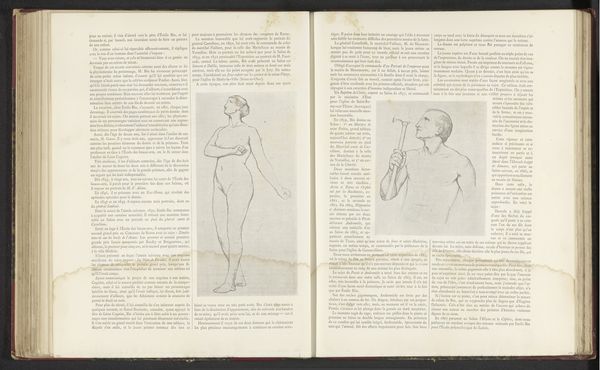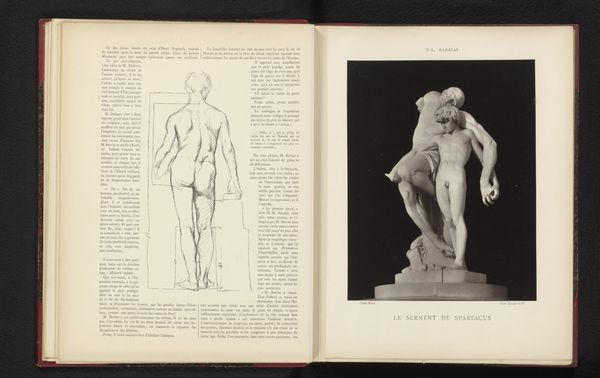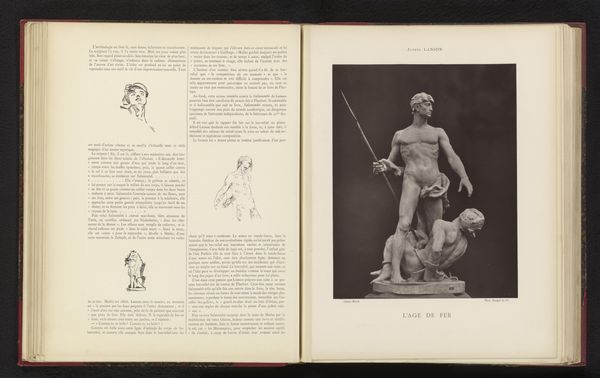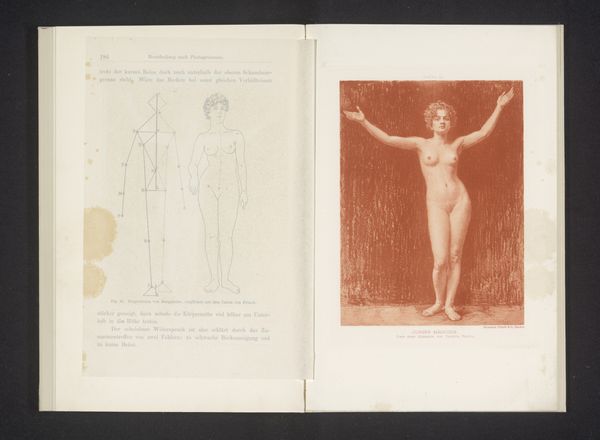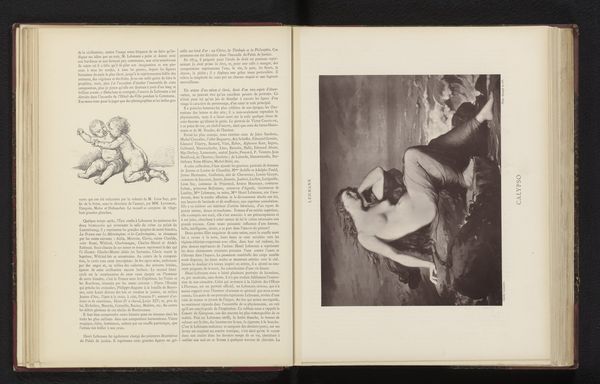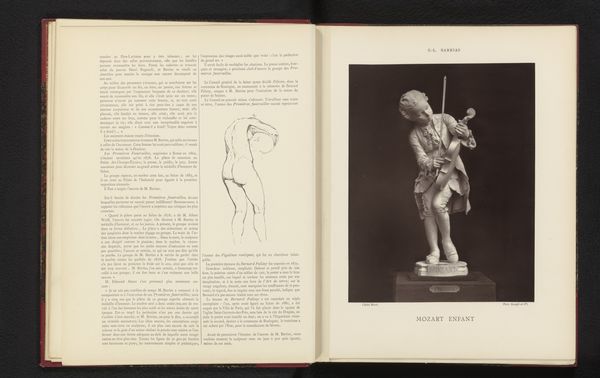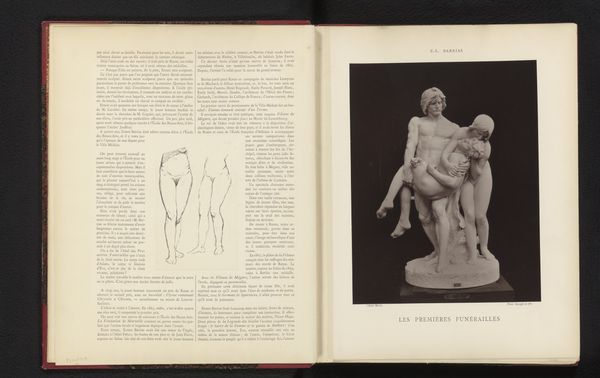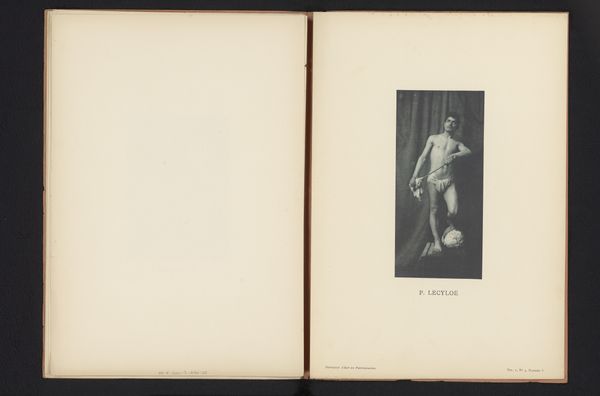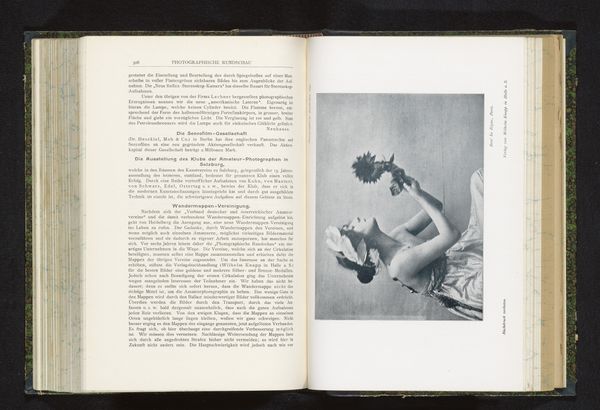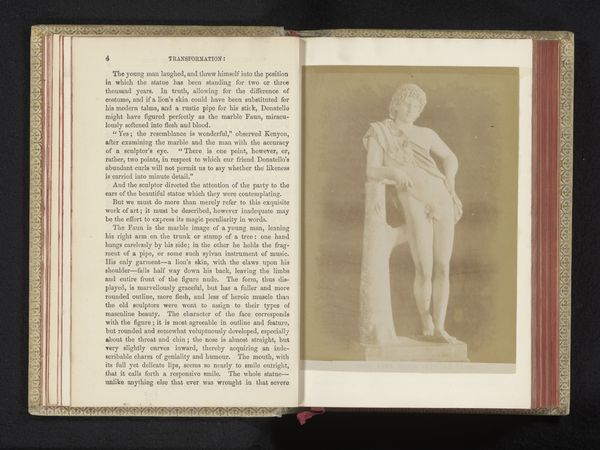
print, photography
#
aged paper
#
toned paper
#
light pencil work
# print
#
old engraving style
#
sketch book
#
personal journal design
#
figuration
#
photography
#
personal sketchbook
#
journal
#
symbolism
#
sketchbook drawing
#
academic-art
#
nude
#
sketchbook art
Dimensions: height 259 mm, width 132 mm
Copyright: Rijks Museum: Open Domain
Editor: So here we have a photographic reproduction of Émile Bin's painting, "Vénus Astarté," dating to before 1879. It's striking how the image is presented within what seems to be an open book, complete with text and sketches. It really blurs the line between a study and a finished work, and the reproduction itself on what appears to be toned paper adds an interesting texture. What catches your eye when you look at this piece? Curator: Immediately, I’m drawn to the means of production. This isn't just about the Venus figure itself, but about the act of reproduction and dissemination of imagery in the late 19th century. Consider the social context: the painting would have been for a wealthy patron or for exhibition in a Salon, but this photogravure? It allows for wider consumption, reaching a different audience through print culture. How does this accessibility democratize art, and what new meanings arise from the industrial process? Editor: That's fascinating! I hadn’t considered the social implications of the reproduction method itself. Does the juxtaposition of the "high art" painting with the seemingly casual sketch and printed text suggest a commentary on the art-making process itself? Curator: Precisely. We see the layered nature of artistic creation, with each layer—painting, photograph, print, book—employing distinct forms of labor. Think about the unseen hands involved in each stage. The labor of the photographer, the printer, the publisher - all contributing to the circulation of this image. The materiality itself – the ink, the paper, the binding of the book – becomes critical to our understanding, and challenges this notion of the solitary genius creating high art. It compels us to challenge established ideas. Editor: So, looking at it now, the book format frames the Venus not as an untouchable ideal but as part of a larger cultural machine involved in creating and circulating images. Curator: Exactly. It reframes our understanding and moves away from only thinking about symbolism. Now the materials and its production are as important. Editor: That really changed how I see this artwork. I was initially drawn to the figure itself, but now I'm more interested in its journey and the labor involved. Curator: And that's precisely what material analysis helps us understand – the rich, complex story embedded within the object itself.
Comments
No comments
Be the first to comment and join the conversation on the ultimate creative platform.
